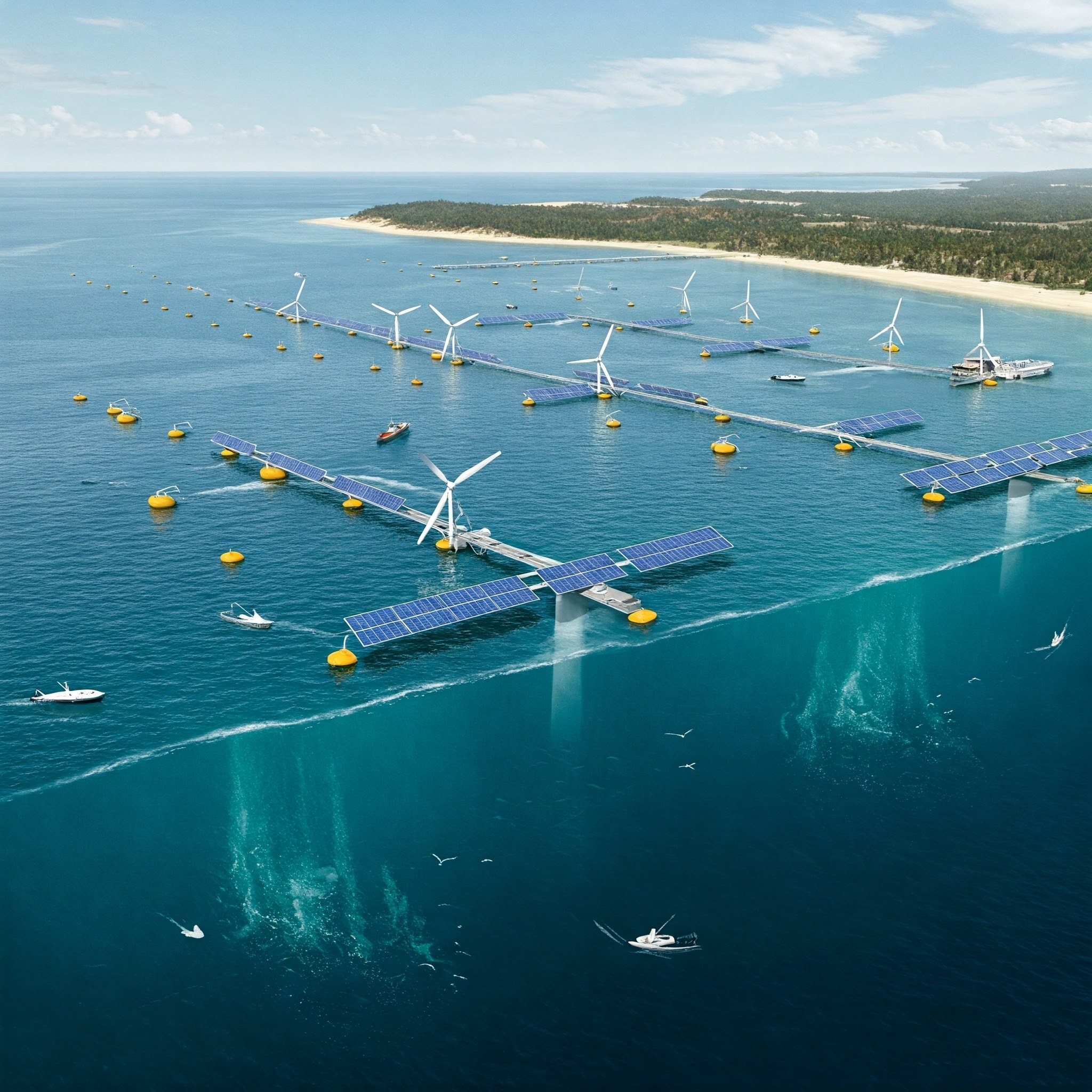The global alternate marine power market is gaining momentum as the maritime sector embraces sustainable technologies to reduce carbon emissions and operational costs. According to market analysis, the industry was valued at US$ 273.8 Mn in 2023 and is projected to grow at a CAGR of 8.1% from 2024 to 2034, reaching US$ 2.2 Bn by the end of 2034.
Market Overview: Rising Demand for Sustainable Marine Solutions
Alternate Marine Power (AMP) refers to technologies that reduce dependence on fossil fuels in maritime operations. It includes solutions such as shore power systems, wind propulsion, solar energy, hydrogen fuel cells, and hybrid propulsion systems. These sustainable technologies are gaining traction as the industry shifts from conventional fuels to renewable and low-emission alternatives.
AMP also supports the reduction of greenhouse gas (GHG) emissions by enabling vessels to use shore-side electricity during port stays instead of running diesel-powered auxiliary engines.
Market Drivers: What’s Powering the Growth of Alternate Marine Power?
📌 1. Increase in Focus on Environmental Sustainability
The maritime sector contributes approximately 2% of global energy-related CO₂ emissions, according to the International Energy Agency (IEA). As global pressure mounts to reduce carbon footprints, industry stakeholders are investing in alternative fuel propulsion technologies such as hybrid-electric systems, hydrogen fuel cells, and wind-assisted propulsion.
For instance, in May 2024, Cochin Shipyard Limited (CSL) secured an order from North Star Shipping (UK) for constructing a hybrid service operation vessel (SOV) to support offshore wind operations. Such projects accelerate the adoption of carbon-neutral fuel technologies in the marine sector.
📌 2. Surge in Investment in Green Shipping Initiatives
Green shipping initiatives are reshaping the maritime industry with eco-friendly practices such as the use of alternative fuels and energy-efficient vessels. According to the OECD, global trade is projected to grow by 2.3% in 2025, boosting the demand for sustainable shipping solutions.
In July 2024, X-Press Feeders, a leading independent carrier, launched Europe’s first scheduled feeder network powered by green methanol, a sustainable fuel that reduces GHG emissions by up to 65%. This investment underscores the growing preference for sustainable marine fuels and is driving demand for alternate marine power solutions.
Key Technologies Transforming the Alternate Marine Power Market
💡 Shore Power (Cold Ironing): Allows vessels to plug into the local electric grid while docked, significantly reducing emissions during port stays.
💡 Hybrid and Electric Propulsion: Combines conventional and renewable energy sources, improving fuel efficiency and reducing operational costs.
💡 Wind-Assisted Propulsion: Harnesses wind power through technologies like Flettner rotors, reducing fuel consumption.
💡 Hydrogen Fuel Cells: Provide clean auxiliary power, emitting only water and heat.
💡 Solar Power: Solar panels installed on vessels generate onboard electricity, further reducing fuel use.
Regional Outlook: Where Is the Growth Happening?
🌎 North America: Market Leader with Strong Green Shipping Initiatives
North America accounted for the largest share of the alternate marine power market in 2023, driven by advancements in biofuel adoption and hybrid vessel deployment.
In May 2024, Holland America Line, part of Carnival Corporation, initiated a long-term biofuel test on its flagship vessel Rotterdam, operating on 100% low-carbon-intensity biofuel within the Norwegian World Heritage Fjords. Such initiatives position North America as a key player in the transition to sustainable maritime operations.
🌏 Asia Pacific: Rapid Adoption of Hybrid Vessels and Alternative Fuels
The Asia Pacific region is witnessing a significant increase in the deployment of hybrid vessels and investments in alternative fuels.
In January 2024, AtoB@C Shipping, a subsidiary of ESL Shipping (Sweden), launched Ecomar, a plug-in hybrid vessel in India, marking a significant milestone for green shipping initiatives in the region. The vessel reduces carbon emissions and sets a precedent for sustainable shipping across Asia.
Competitive Landscape: Key Players Shaping the Market
Prominent players in the alternate marine power market are focused on advancing renewable energy solutions, developing hybrid propulsion systems, and upgrading power grid infrastructures.
✅ PRYSMIAN S.p.A.: Leading provider of high-voltage cables, supporting offshore wind farm connections and power grids. In May 2023, Prysmian awarded a contract to The Correll Group to assist in the installation of HVAC export cables for the Calvados offshore wind farm (France).
✅ Nexans: A major player in energy infrastructure solutions. In May 2024, Nexans began installing high-voltage alternating current (HVAC) onshore cables for the Celtic Interconnector, linking Ireland and France via a subsea cable.
✅ Sumitomo Electric Industries, Ltd.: A leader in submarine cable solutions, driving energy connectivity for renewable marine power sources.
✅ LS Cable & System Ltd.: Innovating in subsea cable systems, contributing to efficient power transmission from offshore wind farms.
✅ NKT A/S: Focused on renewable energy cable solutions, supporting global offshore wind projects with cutting-edge technology.
Recent Industry Developments (2023–2024)
📅 May 2024: Nexans began installing HVAC onshore cables for the Celtic Interconnector, connecting Ireland and France via a subsea power cable.
📅 January 2024: AtoB@C Shipping launched the Ecomar hybrid vessel in India, contributing to sustainable shipping in Asia.
📅 May 2023: Prysmian Group partnered with The Correll Group for HVAC export cable installation at the Calvados offshore wind farm in France.
Conclusion: Future Outlook for the Alternate Marine Power Market
The alternate marine power market is set for robust growth through 2034, driven by the global push for environmental sustainability and green shipping initiatives. Investments in hybrid propulsion systems, shore power solutions, and renewable fuels will shape the industry’s future.
As technological advancements accelerate and regulatory frameworks favor eco-friendly solutions, the adoption of alternate marine power is expected to surge, ensuring a sustainable and low-emission future for the maritime sector.


